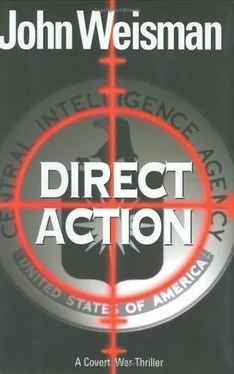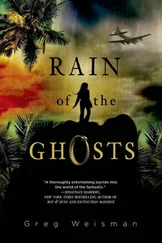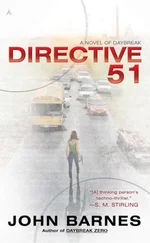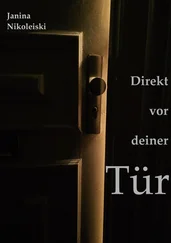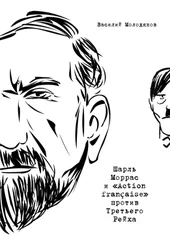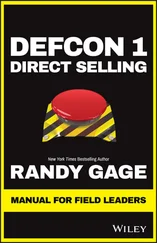“Of course. There’s an alley near the top of rue Ramey,” Reuven said in response. “It’s right at the sight-line periphery of the van on rue Labat. But it’s overcast tonight and I think if you’re careful you’ll be able to get over the wall without them seeing you. You go in and you head south. You climb three more walls and cross three tiny yards. There are no dogs, so you shouldn’t be bothered. The yard after the third wall backs up against the target house. There’s two exterior drainpipes running from the ground to the roof. The one on the left-hand side takes you past the safe-house window-two floors aboveground. If you pull a good Spider-Man and hang on one-handed, you might even be able to get video.”
Tom said, “Hmm.”
“It all depends whether or not they’ve left the shades up-and how you feel about whatchamacallit shinnying up drainpipes these days.” He looked at Tom. “I hope you still remember your rock-climbing skills from Dartmouth.”
Tom suppressed a double take and answered the Israeli matter-offactly. “It’s kind of like riding a bicycle, Reuven-you don’t forget.” But he couldn’t stop himself from asking, “How the hell did you know about rock-climbing?”
Reuven allowed himself to crack a hint of a grin. “What, you don’t think I ran a thorough profile on you back when you and I were butting heads?”
1:45A.M. They continued walking east on rue Nicolet, crossing midblock onto the south side of the street. The move was relatively secure because Reuven knew the single streetlamp between the foot of rue Lambert and rue Ramey wasn’t working. He knew it wasn’t working because he’d shattered it the previous night with a ball bearing fired from a small slingshot. When no one had reacted to the sound, he’d taken the time to sweep up the glass shards and get rid of them. The ploy had worked: the lamp hadn’t been replaced yet.
The third house from the corner had a large recessed portico. “Go there.” Reuven nudged Tom into the doorway. The Israeli checked over his shoulder, then followed. He knew the watcher down the street couldn’t see them without exposing himself.
1:46:14. Tom ripped his long web belt out, shed the gray-and-white-checked chef’s trousers, turned them inside out, pulled them back on over his black running shoes, then rethreaded the belt. He did the same with the red-and-blue Paris Ste. Germaine anorak he wore over a set of black thermals. The anorak reversed into solid black.
1:46:17. Reuven unrolled the package of chef’s knives. He paused, then handed Tom one of the pencil-like miniature video cameras. “Use the high-resolution night-vision lens.”
“Good idea.” Tom slipped the camera into the fanny pack he’d carried inside the shopping bag of food. Then Tom worked a radio earpiece into his ear, attached the mike to the collar of his jersey, ran the wire down to his waist, clipped a secure radio receiver to the fanny-pack belt, turned the unit on, tugged on it to make sure it was securely seated, then plugged the earpiece in.
The radios were for emergency use only. In Hollywood, they jabber on their radios during black ops the way teenagers use cell phones in shopping malls. In reality, you never speak unless it’s a life-and-death situation. Radio transmissions-even secure ones-can bleed into other frequencies. Indeed, terrorists in hiding often keep TV sets turned on. If the screen starts picking up snow or other interference, it is a sure sign that there are folks talking on UHF or VHF radios in the vicinity.
1:46:27. Reuven attached his own radio, which also had a throat mike, then watched as Tom took off the long-billed baseball hat he’d been wearing, pulled a black knit watch cap from the shopping bag, and jammed it onto his head. The American affixed a fake mustache onto his upper lip and allowed Reuven to adjust it.
1:46:33. Reuven pulled a hat out of the shopping bag, exchanged hairpieces, and reversed his jacket and trousers, altering his shape and his silhouette.
1:46:44. Tom handed Reuven the shopping bag. He pulled on the pair of thin, black Kevlar-lined leather duty gloves he’d bought out of a law enforcement catalog. “Go-see you later.”
In response, Reuven gave his colleague an upturned thumb.
“Very funny.”
“I’ll give you one tap on the radio when I’m clear of rue Nicolet. Only move then.”
“Understood. See you at the rendezvous.”
1:46:51A.M. The Israeli slung the long handles of the shopping bag over his right shoulder and strode boldly down the three steps, turned left, and marched up the street. He’d constructed his cleaning route so as to make things as difficult as possible for the opposition. It wouldn’t be hard, either. First of all, they appeared to be using single watchers. Bad tactics. When Reuven had set up the hit on Palestinian intelligence chief Atif B’sisou in Montparnasse, he’d used four three-man teams to seal the area. No matter how the Palestinians might have reacted, Reuven had been confident there’d be at least one Israeli team on them every second.
Reuven pulled the cap down on his head and headed straight for rue Bachelet. It was a rule of combat: when ambushed, counterambush. When attacked, counterattack. Do not shy away. Get in your adversary’s face-which is exactly what he was doing now. There were only two possibilities: the watcher would go passive, in which case he’d shift his position to keep Reuven from seeing him. If he did that, Reuven would lose him on the cleaning route. Or he’d go provocative and aggressive, in which case Reuven would deal with him using the suppressed Glock he’d carried in the small of his back, but which now rested in his right hand, concealed by the shopping bag’s big outer pocket.
In either case, Reuven would turn right onto rue Bachelet and follow the one-way street with the traffic flow, then veer west and scamper up the long stairway at the end of rue Becquerel. Any pursuers would immediately become obvious. Moreover, they’d have to really scramble to cut him off at the stairway’s top end on rue Lamarck.
Rue Lamarck was a scythe-shaped, one-way street. The long handle of which extended as far west as the avenue de St. Ouen. The scythe’s blade ran around the eastern base of the Sacré Coeur cathedral compound. And running off that section of rue Lamarck were a bunch of the tiny, narrow, no-more-than-alley-wide streets common to the Montmartre district. Reuven would use those passageways to lose any pursuers. He’d complete his cleaning route by circling clear around Sacré Coeur, then move east and south once more, waiting for Tom near the Château Rouge metro stop. It was a piece of cake. Maybe.
1:47:33. Careful to stay on the outer part of the narrow sidewalk, Reuven came abreast of the doorway where he’d spotted the watcher. He glanced left. The doorway was empty. The guy had obviously shifted position while he and Tom were doing their fast change. That was good news/bad news. Good news was that he’d gone passive. Bad news was he was out there somewhere, prowling and potentially dangerous. Either way, it was time for Tom to get moving. Reuven reached down with his left hand and tapped the transmit button on the radio once.
1:47:39. As Reuven made his way around half a dozen parked motorcycles at the end of rue Nicolet and turned onto rue Bachelet he realized the opposition had been doing some contingency planning, too. The two streetlights, which less than twenty-four hours earlier had given the street of antique houses the postcard look of Toulouse-Lautrec’s nineteenth-century Montmartre, were now both extinguished. The entire length of the 170-meter-long street was plunged into ominous, murky darkness. Things had gone from Le Lapin Agile to Rififi .
Читать дальше
